No. 3/1990, p. 1-16
Bernd Thier: Clay-pipe finds from the Karlsburg in Bremerhaven
(1672-1680)
Excavations at the Karlsburg, a stronghold that was only in existence
for a few years, were carried out in 1970 and a total of 1632 fragments
of clay pipes were found. The age of the pipes, which are mostly
from Gouda, can usually be determined from the shape of the bowl,
the type of decoration and the marks, and corresponds to the period
for which the Karlsburg stronghold was in use. Some of the pipe
bowls that clearly, from their shape, date from the 1670s bear marks
such as "PP" and "Justitia". Previously these
particular marks were inferred to date from after 1680. Some of
the finds, therefore, provide strong evidence that the ages of several
Gouda marks are too young and need revising.
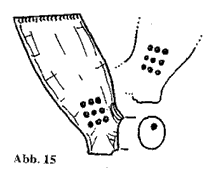
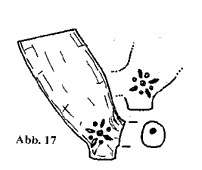
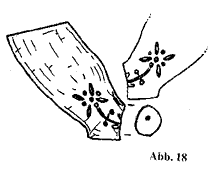
Clay pipes with heel; bowls show a flower-like decoration,
Holland, before 1678
|
|
|
No. 3/1990, p. 20-31
Henry Toms: Official decrees on the marking of clay pipes in the
Lower Saxony region
Pipes often bear not only the maker's mark but also a mark intended
for customs and/or tax purposes. In the 18th century several of the
latter kinds of marks were made obligatory in the Lower Saxony duchies
and principalities. In 1713 for example, Georg Ludwig, Elector of
Brunswick-Hanover decreed that all clay pipes made in the newly established
clay-pipe factory in Celle must be stamped with a mark depicting the
initials "GLC" beneath a crown. In 1768, the "Hanoverian
horse" mark was made obligatory for all clay pipes produced in
the principality of Hanover. The mark "GR" stands for Georg
Rex, and alludes to the three Electors of Hanover, who were also kings
of England. It was probably introduced in 1713, and often occurs together
with the maker's mark.
|
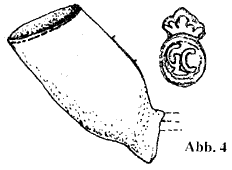
Pipe with crown above GLC (= Georg Ludwig Churfürst)
heel mark, made in Johann Heinrich Bönckemeyer's factory
in Celle, 1713-1729
|
|
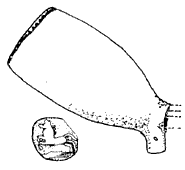
Pipe with heel mark
showing a horse jumping,
Lower Saxony, 1768-1800
|
|
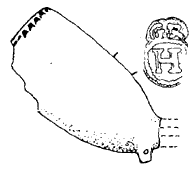
Pipe with heel, mark on back of bowl: GR (=
Georgius Rex) above H, Lower Saxony, 18th century
|
|
|
